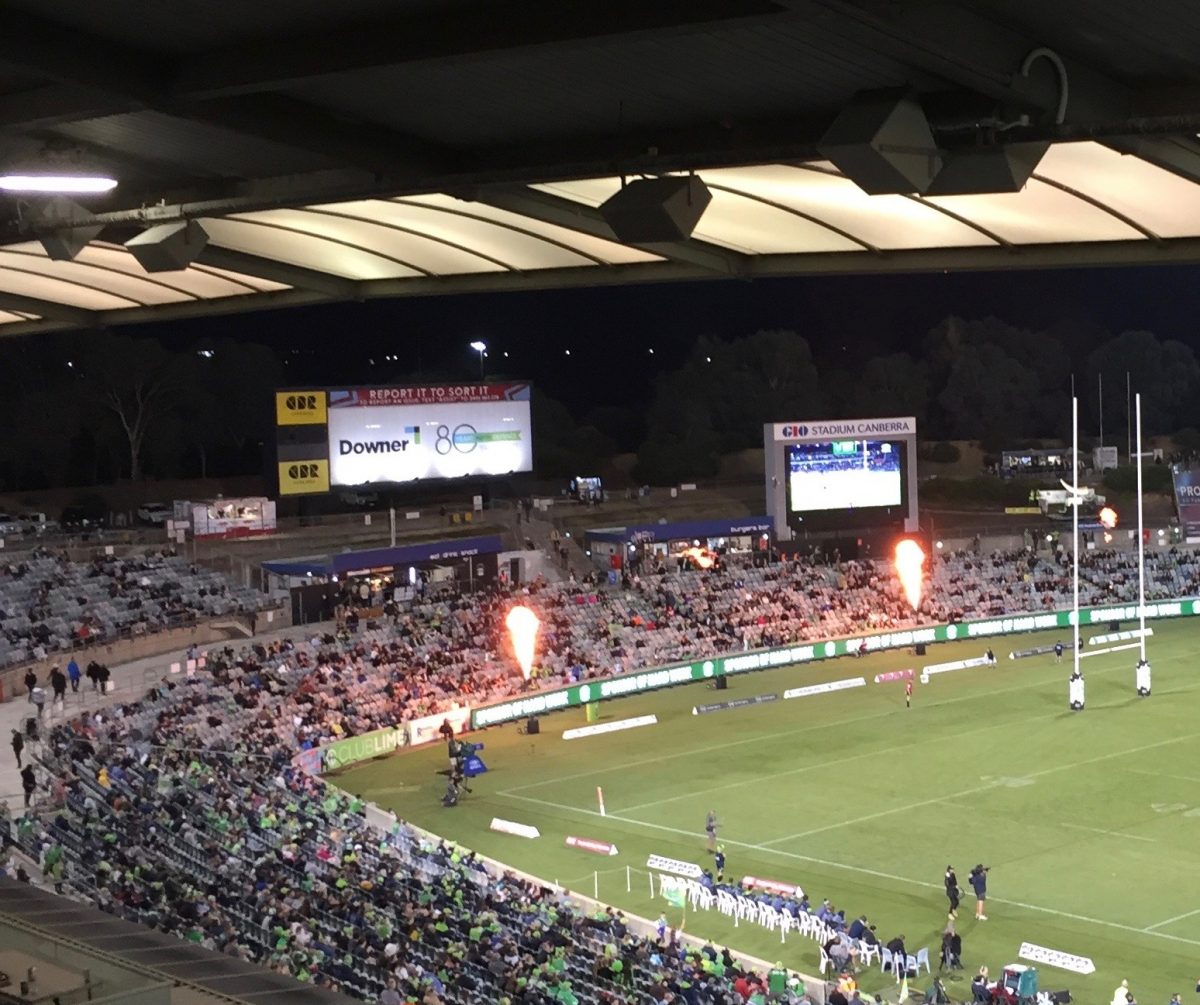
Canberra Stadium looks likely to be with us for a while yet. Photo: Jennifer Andrew.
The latest push for a city stadium project looks likely to flounder on its funding premise, cost estimates and likely planning changes needed.
The proposal from peak business, entertainment and sporting groups for a combined stadium and convention centre in a new City East Entertainment Precinct had aimed to overcome previous hurdles, including how to pay for it and how to fit the stadium on the Civic pool site next to Parkes Way.
It envisages a 30,000-seat rectangular stadium, a 30,000 square metre conference centre (three times the current space), a hotel and a vibrant sports and entertainment district.
Chief Minister Andrew Barr said the design option of an inverted bowl structure with its overhanging tiers would allow a stadium to be built on the pool site, but the idea of capturing the value of an AIS land hand back to help pay for it seems unlikely.
He said decisions had already been made to upgrade the AIS Arena and Australian Sports Commission CEO Kieren Perkins had made it clear that he wanted to revitalise the precinct.
That meant the Federal Government would have to reverse its decision for the proposed funding mechanism to be possible.
“There’s nothing I’ve seen yet that says this is a goer, but there are some ideas, particularly around the design,” Mr Barr said.
The Australian Sports Commission made it clear the land release option was a dim prospect.
The ASC was committed to the AIS campus in Canberra and continued to work closely with the Federal Government to plan the AIS campus revitalisation, it said in a statement.
Mr Barr questioned the proposal’s costings of $495 million to $736 million to build the stadium complex.

The AIS land sought to help fund the city stadium project.
He said that the cost of the stadium components had been underestimated and that the proposal did not mention the significant contamination of the pool site and the cost of remediating it.
Mr Barr said the cost of finance under a Public Private Partnership would be much higher than public borrowing and he was not sure a private partner would take on the additional risk of dealing with the contamination.
He said the stadium design would fit but would require extensive excavation, and it was not clear how it could be kept under the 25-metre height limit unless there was a change to the National Capital Plan.
The ‘Dunedin-style roof’ would be the one to choose from, but there was still the issue of the turf cooking under the hotter Canberra sun.
Stadium consultants in the proposal were confident technical and engineering problems could be solved.
Mr Barr said the proposal did not provide any costings for the convention centre aspect but there would not be much change out of $1.5-2 billion.
It was also important that any development did not price users, such as the Raiders and spectators, out of the venue.

A city stadium precinct concept illustration from the 2018 GHDWoodhead study.
He said the government would look at the proposal, but there were many questions and no decision would be made by either the next federal or ACT budget, as sought.
“I want to be very clear there will be no announcements in the ACT budget next year for a billion dollars for a new stadium,” Mr Barr said.
“We’ll have a look, but it hinges on many things, most of which are very challenging.
“This doesn’t change much but it does invite a further conversation on some elements.”
Mr Barr only last month appeared to bury the idea of a city stadium, ruling out moving Parkes Way, saying the economics did not stack up.
He said the focus would now be on working with the ASC on upgrading Canberra Stadium.
The proposal not only looks to unlock the AIS land but also suggests that Glebe Park, or at least a portion of it behind the Convention Centre, be available to the PPP vehicle.
That would almost certainly provoke strong public opposition.
The proposal has the backing of the Canberra Business Chamber, which says the ageing stadium and convention facilities are no longer fit for purpose.
CEO Graham Catt said the existing stadium facilities had operated beyond their useful life and were a barrier to attracting cultural events and sporting activities to the National Capital.
“The National Convention Centre is the only centre in the country that hasn’t expanded its footprint since it was built, and that results in a lack of capacity and a situation where we often can’t accommodate important national and global events,” he said.
Mr Catt said groups and stakeholders from the business, sporting, entertainment and hospitality sectors all saw the proposal as an opportunity to unite behind the government and achieve a shared vision for new infrastructure to replace ageing structures.
“This is a unique opportunity, when supported by a PPP business model, for intergenerational infrastructure to be delivered without adverse impacts on governments’ bottom lines,” he said.




















